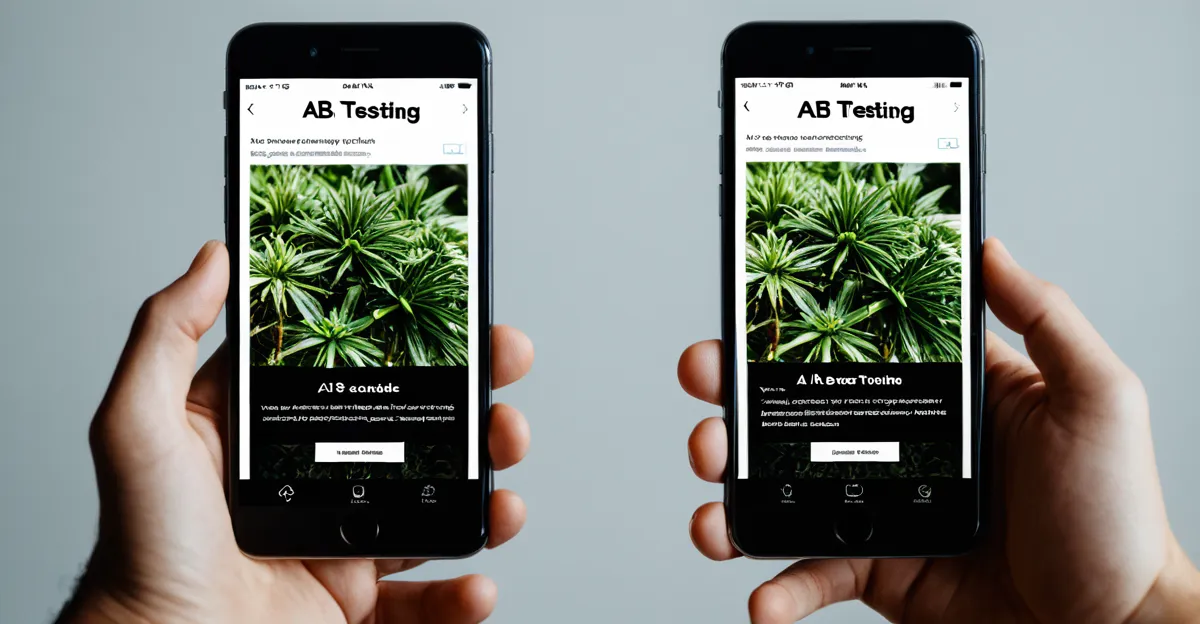A/B testing compares two versions of a webpage or product feature to identify which performs better. By using statistical analysis, it reveals genuine user preferences and guides data-driven decisions. Whether optimizing marketing emails or refining app interfaces, A/B testing helps improve engagement and conversions while minimizing guesswork and risk. Understanding its principles and common pitfalls ensures more reliable, actionable results.
Defining A/B Testing and Addressing Core User Needs
You can view more details on this page: https://www.kameleoon.com/ab-testing. A/B testing—sometimes called split testing—refers to a randomized experimental methodology comparing two or more variations of a digital asset under real user conditions. The goal is to establish, through statistical analysis, which version performs best according to key metrics like conversions, click-through rates, or engagement levels. By splitting user traffic between versions A and B, businesses can confirm or refute hypotheses about design or content impact, shifting from intuition or assumption to measured, data-driven validation.
This might interest you : Unlock creative potential with an interactive studio agency
This structured experimentation is foundational in digital marketing and product development, as it mitigates the risks of making widespread changes based on subjective opinions. A/B testing empowers teams to make low-risk, incremental adjustments—for example, altering a call-to-action’s color or messaging to observe measurable improvements rather than launching full redesigns that might backfire. Addressing diverse user needs also means segmenting audiences for targeted insights, enabling marketers and product teams to uncover what resonates for different demographics or user journeys.
Harnessing A/B testing as a core principle in digital optimization supports organizations in allocating budgets and efforts where evidence shows the greatest return. Instead of guessing, you learn directly from user behavior, creating a positive feedback loop of continuous improvement and reduced resource waste.
Also to discover : How book mockups elevate visual storytelling in publishing
How A/B Testing Works in Practice
How to run split tests on websites begins with structured planning. Typically, the workflow starts by setting clear objectives—like improving conversion rate—and moves to formulating a testable hypothesis. A/B test design principles guide this process, ensuring hypotheses address actionable elements, such as changing a call-to-action or adjusting a layout for e-commerce conversion optimization. Once a goal is defined, you document the split testing experiment steps: select key metrics, plan segmentation, and outline what qualifies as success.
When executing the step-by-step process, first split incoming traffic evenly (ensuring the control group and variant group are randomized). Split testing for e-commerce conversion optimization requires robust tracking, so choose split testing tools free of cost or with premium features, based on your needs. As traffic arrives, the split testing software records user actions and monitors desired events. Utilizing a statistical significance calculator, you periodically check if results are likely due to your change rather than chance, and determine optimal testing duration.
Modern companies rely on the best split testing software to manage large-scale tests. Platforms such as Google Optimize, Kameleoon (see https://www.kameleoon.com/ab-testing), and VWO streamline the split testing experiment documentation and integrate seamlessly with analytics. For WordPress users, specialized split testing software for WordPress enables fast launches, straightforward analysis, and documentation directly inside the CMS.
Real-World Applications and Performance Insights
Website split testing examples illustrate how diverse industries drive measurable outcomes by iteratively improving user experience. In e-commerce, Amazon’s one-click purchase feature is a direct result of split testing case studies focusing on reducing cart abandonment. Split testing for landing page optimization often yields insights such as increased sign-ups or reduced bounce rates when layout or CTA text is modified.
Metrics are essential. Split testing performance metrics—conversion rate, click-through rate (CTR), bounce rate, and revenue per visitor—quantify impact. For example, lower bounce rates signal more effective page designs, while revenue per visitor provides a precise measure of the business benefit. The Stanford Question Answering Dataset (SQuAD) equations, such as precision (tp/(tp+fp)) and recall (tp/(tp+fn)), reinforce that interpreting split test results relies on rigorous statistical analysis.
Split testing in email marketing is another powerful real-world split testing application. By testing different subject lines or content layouts among segmented audiences, organizations have observed open rates rise from 25% to 47%. Booking.com, Netflix, and Google famously conduct ongoing split testing for SaaS product growth, transforming data insights into scalable business improvements through controlled experiments and ongoing analysis.
Best Practices, Pitfalls, and Advanced Considerations
Ensuring valid results: sample size, statistical rigor, and experiment timing
Accurate split testing starts with calculating sample size for split tests. Using a statistical significance calculator reduces error margins and ensures results are not due to random fluctuations. Sample size calculators take into account conversion goals, projected uplift, and baseline rates, directly influencing split testing data quality best practices. Running tests for the correct duration, based on calculated sample needs, helps avoid premature conclusions or missing true effects. Effectively interpreting split test results depends on achieving statistical significance, often at the 95% confidence threshold, and cross-referencing with analytics dashboards.
Avoiding common mistakes: over-testing, misinterpreting analytics, segment misuse
Many split testing pitfalls to avoid stem from neglecting split testing data quality best practices. Testing too many variables at once or stopping experiments too early can distort outcomes. Segment misuse—targeting subgroups without sufficient traffic—leads to flawed interpretations, highlighting the importance of not overcomplicating analysis. Always verify segment reliability and avoid overfitting to small user bases.
Advanced methodologies: multivariate testing, Bayesian analysis, server-side vs client-side approaches
Beyond basic split testing, advanced approaches offer deeper insights. Multivariate testing comparison enables exploration of interaction effects among several elements, providing a more nuanced understanding than standalone split testing. Bayesian vs frequentist split testing approaches offer distinct advantages: Bayesian analysis updates probability in real time and often yields faster, more intuitive interpretations, while frequentist methods require predefined sample sizes and are preferred for rigid experimentation scenarios. User experience split testing on server-side platforms prioritizes performance and data precision but demands stronger technical resources compared to client-side implementations. Optimizing methodology and tools ensures robust, actionable insights.










